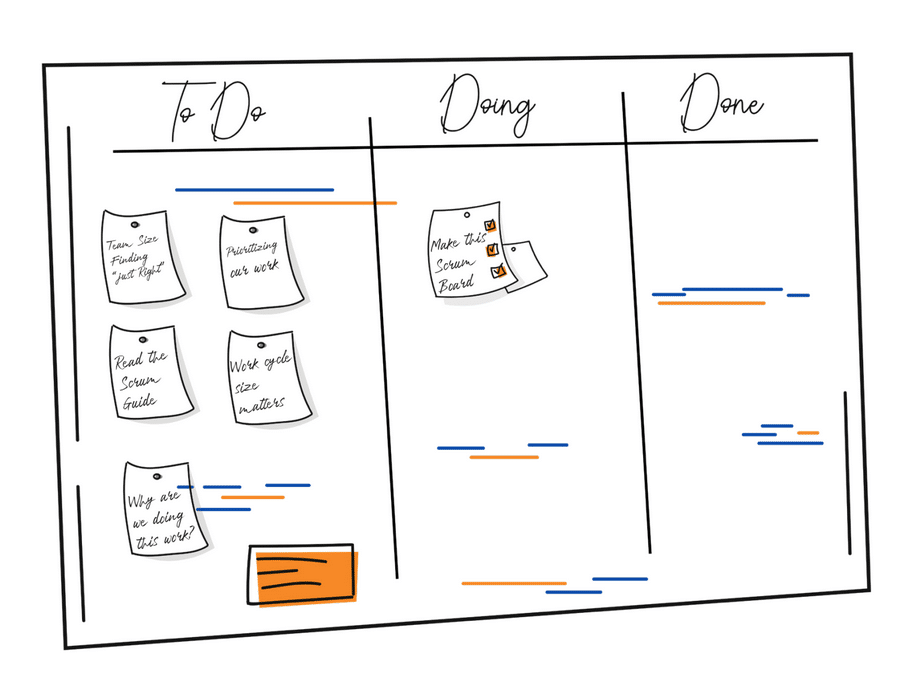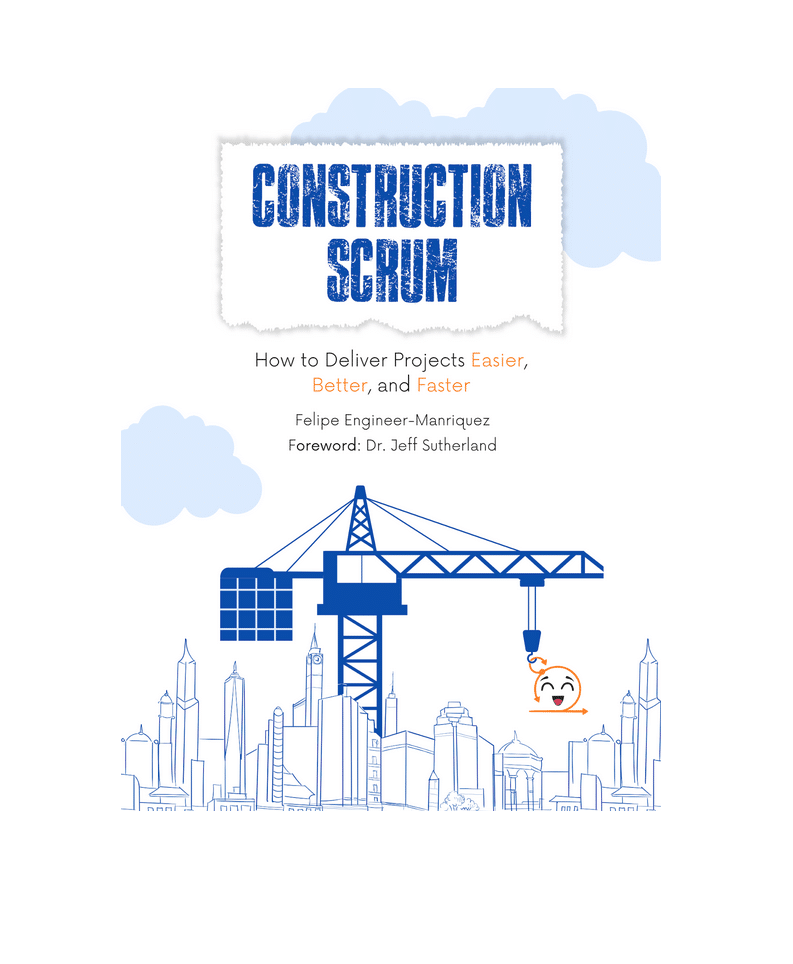Construction Scrum: How to Deliver Projects Easier, Better, and Faster is the first practical guide for construction professionals to implement the Scrum framework in the construction industry. The book is organized in three parts. Part one is a series of short stories that illustrate how Scrum works in design and construction. Part two is my Scrum story including the Scrum values and pillars. Part three offers an invitation for construction professionals to create their own Scrum playbook with my insights and commentary.
While I studied electrical engineering at the University of Illinois at Chicago, I started working as an intern for an international general contractor on a traditional project management path that included “doing your time” to earn experiences and opportunities in the building industry with deep roots and dogmatic traditions.
This is the way we have always done it
Phrases like the ones below were not just memes you’d come across in social media feeds, they were daily mantras used by professionals to onboard newcomers into how buildings are constructed:
- This is the way we have always done it.
- Do it my way or there’s the door.
- If it ain’t broke, don’t fix it.
- We are not reinventing the wheel here, just do your job.
- Put your head down and work hard.
- We are paid to do, not to think.
- Keep yourself busy, we reward hard work.
- We have traditions for good reasons.
- You don’t have enough experience to improve ______ (insert any process here), just follow _______ (insert any long-term employee’s name here) lead.
I quietly worked nearly a decade before waking up to the possibility that working longer and harder wasn’t the only way to achieve beneficial results and deliver customer value. By luck, I happened to be attending a company seminar, drinking enough coffee to stay awake after working over 60 hours by midweek, to hear from a project director expounding on the benefits of adopting lean manufacturing principles to construction. The message was clear, there are more effective ways to work that don’t require heroic effort or perfect luck. I asked the director how I could get started. He said it was as easy as reading a book and joining a small group of like-minded builders on a monthly conference call. I told him I was already working over 100 hours per week and didn’t have time to read a book. He replied, "No problem, keep doing the same thing, and think about if you are being effective at work or being present at home."
This wake-up call not only made me discover lean IPD, it also led to continuous reading, personal development and on-the-job value experimentation.
Having fun with Scrum to get more done
By a stroke of fortune in 2014, I was recommended Scrum: The art of doing twice the work in half the time by Jeff Sutherland. I couldn't put the book down and finished reading it in three days. Immediately testing the framework with the help of my then toddler-aged son. Our Scrum team of two planned and completed our first team sprint that weekend. Our goal was to make packing for a vacation fun while enjoying indoor and outdoor playtime, exercise, and lunch. We met our Scrum goal, exceeded our planned activities, and had fun moving sticky notes across our makeshift Scrum board, a bedroom door. Originally, we thought there was no way we’d each be completely satisfied with each task’s duration and quality but using the framework shattered both of our low expectations. This was so new and cool I had to try it out at work.
Less than two years later, I would be standing in a multinational software company’s meeting room in Palo Alto, California, not ten feet away from the co-creator of Scrum and the person I deemed most responsible for inspiring me to change my habits, Dr. Jeff Sutherland. I was his first construction professional using the framework, and he was leading me and a dozen others working to earn the ScrumMaster® certification.
In that capacity, I guided fellow construction professionals using Scrum to teach Scrum via interactive learning to thousands of industry partners from students to superintendents, admins to architects, engineers to executives, and industry professionals across hundreds of organizations. Jeff and his family even use Scrum for getting things done at home. I later used Scrum to organize my learning and teams to successfully earn an MBA from California State University at San Bernardino in 18 months without interrupting my business travel obligations, conference presentations, and work with the Lean Construction Institute.
“With Felipe’s partnership in Scrum Inc, a new Scrum team focusing on Scrum in construction was formed to serve the millions of men and women working to build our world. His generous contributions to this team and the growing community of Scrum practitioners continue to have an outstanding impact on transforming people’s work and lives.” (Excerpt from the foreword by Dr. Jeff Sutherland, co-creator of Scrum and CEO of Scrum Inc.)
Illustration: Lilian Bello
Using Scrum to establish good habits
Scrum transformed much more than my work. It improved my professional life, my private life, and my health. This lightweight system makes daily improvement a habit and builds an ever-increasing capacity. After adopting Scrum, individuals, and teams often immediately double, triple, and continue to iterate upon improvements driving team output beyond quadruple value delivery. The most impressive results I see are in capacity increase to better control schedules and the opportunity of daily self-development. Today, I continue to use the Scrum framework to onboard construction professionals in my organization and across the construction industry on four continents and counting.
The future of construction
Construction Scrum encourages construction teams to take action and make project delivery easier and better for the industry today and in the future. The book focuses on empirical process control theory. That simply means we learn by doing things hands-on with all our senses. Our actions and work are visible. The team is self-organized, self-motivated, and self-disciplined. In other words, Scrum is an iterative experimentation framework cycle which focuses on learning by doing. As a by-product, people reclaim their power, their freedom, and the joy of accomplishing great things. They simply have more fun doing what they do while getting done twice as much in half the time. And who wouldn't want this?
I have dedicated this book to all the people in our industry who take action and make project delivery easier and better for construction today.
My vision for Construction Scrum is to bust the myths and assumptions around Scrum and to simplify the life of construction project managers, superintendents, field engineers, and craft professionals.
If you work in the construction industry and are ready to embrace change and the opportunities that come with it, I would be thrilled if my book became your compass.
International Lean speaker, a serial intrapreneur, Felipe Engineer-Manriquez is a committed Lean practitioner with two decades of construction industry experience. He is an active contributing member of the Lean Construction Institute and an approved instructor/facilitator. Engineer-Manriquez was honored with the Lean Construction Institute (US) Chairman’s Award during the 21st Annual LCI Congress (Oct. 14-18, 2019) in Fort Worth, Texas, for contributions to the Institute and the design and construction industry as a whole.
Felipe works with executive leadership and guides senior leaders for strategic planning and improving work processes. He works directly with regional VPs of operations to ensure safety, quality, production, and net margin enhancement. He mentors designers/engineers, and project teams across the nation. He has more than 20 years of experience in construction and more than ten years of experience in business strategy implementation. Felipe has a Bachelor of Science in Electrical Engineering, an MBA, and holds active leadership roles in the Lean Enterprise Institute, Construction Industry Institute, and other business organizations.
He is a Jeff Sutherland Certified ScrumMaster® with years of weekly sprints moved to Done and user of Scrum to lead thousands of fellow construction professionals via guided interactive learning. Felipe also currently serves as the chair of the Construction Industry Institute Collaborative Scheduling Research Team (18-362).







